Materials Science Webinars
Gain the maximum throughput with artifact-free surfaces for sample characterization by using high current plasma FIB-SEM
The standard procedure for preparing cross sections using the FIB-SEM technique is to use high currents to remove material quickly, then reduce the FIB current to obtain better beam profile and consequently, a better quality for the final surface. Reducing the maximum current used for final polishing of the section surface, however, results in a longer preparation process. For small cross sections with sizes in the tens of µm, this current reduction method is acceptable. However, as the size of the cross-sectional area to be polished increases, the analysis time increases substantially; therefore, this method is not suitable for preparing cross sections with sizes in the hundreds of µm. To overcome this limitation for large cross sections, plasma FIB was introduced to deliver higher beam currents than those achievable with conventional Ga FIB-SEMs.
Plasma FIB-SEM provides several advantages for sample characterization. First, its high current ion beam is capable of high material sputtering rates which enables efficient preparation of large trenches or cross sections. Plasma FIB also can be used for polishing large surface areas, thereby enhancing sample features and providing more detailed contextual information about structure and composition. about the sample. This can help to reveal material distribution, obtain better statistical information, and link the microscale to the nanoscale sample characterization.
Several technologies have been introduced that improve the implementation of high current plasma FIB for large scale materials characterization. In this webinar, we will walk through the typical plasma FIB cross-sectioning workflow and discuss high current polishing methods. We will present TESCAN’s TRUE X-Sectioning TESCAN Rocking Stage, which were developed to suppress artifacts and improve the final cross section surface quality when using high beam currents for final polishing. Finally, we will show how plasma FIB-SEM speeds not only cross section preparation, but also enables a greater understanding of your materials by improving 3D FIB-SEM tomography analyses.
About Martin Slama
Martin Sláma is a Product Manager for FIB-SEM in Material Science and Life Science with over 5 years of experience in conventional and advanced TEM preparation methods using TESCAN’s plasma FIB and Ga+ FIB-SEM solutions for Materials Science. Prior to joining TESCAN, Martin worked in the field of new material development and characterization at Brno Technological University, CEITEC, and Aston University.
Presenter: Martin Slama
Date: ON DEMAND
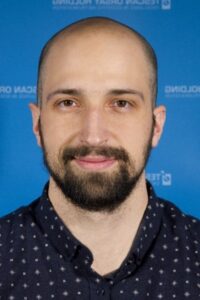
Innovative FIB/SEM Lift-out Solutions for Advanced TEM Lamella Preparation Requirements
The success of transmission electron microscopy (TEM) analysis depends heavily on the quality of the sample preparation. And sample preparation requirements become more stringent when the atomic resolution is needed or when material features are smaller or more complex. Using FIB to prepare samples for TEM provides the best method for achieving the required thin lamella and ensuring uniform quality. Today’s novel materials, in particular, require more advanced TEM sample preparation methods to truly observe the samples with the desired detail.
For these novel materials, sample thickness is not the only parameter that must be considered. FIB-SEM instruments allow site-specific sample preparation by combining several techniques that help to locate the feature of interest on the sample or determine the orientation of a structure. In some cases, the samples will require that the lamella is prepared from a specific geometry, which necessitates the use of a lift-out technique.
In this webinar, you will learn how the unique position of nano manipulator in the FIB/SEM chamber supports innovative lift-out methods and unique geometries that are opening new possibilities for TEM lamella preparation as well as new opportunities for more advanced studies.
About Martin Slama
Martin Sláma is a Product Manager for FIB-SEM in Material Science and Life Science with over 5 years of experience in conventional and advanced TEM preparation methods using TESCAN’s plasma FIB and Ga+ FIB-SEM solutions for Materials Science. Prior to joining TESCAN, Martin worked in the field of new material development and characterization at Brno Technological University, CEITEC, and Aston University.
Presenter: Martin Slama
Date: ON DEMAND

ADVANCED LAMELLA PREPARATION - Achieve the highest quality TEM lamella for complex materials using a unique lift-out solution
For TEM sample preparation, it is well known and accepted that FIB provides best method for achieving site-specific high-quality TEM lamella from the widest range of materials. Still, the success of the consequent TEM/STEM characterization is directly connected to the sample’s overall quality:
• How do I prepare a specimen that is thin enough? Is it artifact- and damage-free?
• Are the features of interest captured in their intended orientation?
• These are all valid questions worthy of addressing when preparing TEM lamellae.
In this webinar, Martin Sláma (Product Marketing Manager for 3D FIB-SEM characterization and TEM lamella preparation) will present examples of the TEM prep challenges that are addressed with TESCAN’s unique, below-the-FIB position of the nanomanipulator, and see how to achieve the intended specimen orientation. A graphical interpretation of the nanomanipulation process will be used to demonstrate preparation of inverted, 90° rotated and planar lamellae with
nanomanipulator placed below the FIB.
About Martin Slama
Martin Sláma is a Product Manager for FIB-SEM in Material Science and Life Science with over 5 years of experience in conventional and advanced TEM preparation methods using TESCAN’s plasma FIB and Ga+ FIB-SEM solutions for Materials Science. Prior to joining TESCAN, Martin worked in the field of new material development and characterization at Brno Technological University, CEITEC, and Aston University.
Presenter: Martin Slama
Date: ON DEMAND

Efficient Analytical Workflows with TESCAN’s VEGA and MIRA SEMs
Feature size and its potential to deviate from expectation, materials composition, and the relationship between small scale and large scale — these are common questions that can be resolved by SEM microanalysis.
Samples may vary in type, size, and shape, as well as in their individual preparation methods, therefore, an SEM workflow is the best choice for obtaining characterization data. The most common SEM workflow consists of three steps: navigation, sample contrast exploration (SE/BSE), and elemental inspection (EDS). The degree to which this workflow can be effortlessly and efficiently applied to the wide range of samples coming to the laboratory—while also maintaining the highest possible resolution and image quality—is one of the many key factors which define the productivity and success of materials research and development projects.
At their market introduction, TESCAN´s VEGA and MIRA SEMs were designed to allow users performing this common workflow to do so intuitively and efficiently. In this webinar, we will show how new features on TESCAN’s 4th Generation VEGA and the FEG-SEM MIRA make a conventional analytical workflow more intuitive to perform as well as more efficient, so all users, even those new to SEM, can obtain comprehensive data.
About Petr Klimek
Petr Klímek is a Product Manager for TESCAN SEMs at the TESCAN ORSAY HOLDING in Brno, Czech Republic. He has 5 years of experience with SEMs and their application to routine microanalytical tasks. He obtained his Ph.D. in Materials Sciences at Mendel University in Brno and extended his materials research background through his internships at Fraunhofer WKI and Oregon State University (Fulbright Scholar).
Presenter: Petr Klimek
Date: ON DEMAND

Leveraging Advanced UHR-SEM Contrast Methods Using TESCAN CLARA's In-column Detectors
With the similarities in today’s UHR-SEM resolution performance specifications, the criteria for evaluating UHR-SEM capabilities, slowly but surely, are placing more emphasis on the ability to use multiple diverse contrast methods to reveal information that is not visible with resolution alone.
In general, when energy is transferred to the specimen by the primary beam, the sample generates a range of useful signals that are exploited to characterize the material. One of the principal signals generated by the sample, the backscattered electron (BSE) signal, originates at a range of angles and emitted energies from different depths below the sample’s surface. Thus, the angular and energy-selectivity characteristics of the BSE signal are considered secondary backscattered electron contrast methods. It is evident that having the ability to acquire the BSE signal selectively brings with it the potential to enhance the information that a backscattered electron image reveals.
In this webinar, we will show how TESCAN CLARA UHR-SEM is tackling the requirement for differentiated contrast methods by implementing a comprehensive choice of backscattered electron detectors, including chamber-mounted segmented solid-state or scintillator backscattered electron detectors, an on-axis in-column detector, and the proprietary in-column Multidetector™.
About Petr Klimek
Petr Klímek is a Product Manager for TESCAN SEMs at the TESCAN in Brno, Czech Republic. He has 5 years of experience with SEMs and their application to routine microanalytical tasks. He obtained his Ph.D. in Materials Sciences at Mendel University in Brno and extended his materials research background through his internships at Fraunhofer WKI and Oregon State University (Fulbright Scholar).
Presenter: Petr Klimek
Date: ON DEMAND

TESCAN Plasma FIB-SEM for multi-modal materials characterization
The recent developments of new materials and manufacturing technologies are imposing new requirements for materials characterization. Acquiring complete information about material microstructure and its relation to mechanical or physical properties often requires a multi-scale characterization approach involving multiple analytical techniques.
TESCAN FIB-SEM solutions can combine high-resolution SEM imaging with a broad range of microanalytical techniques, including EDS, WDS, EBSD, Raman, or TOF-SIMS.
TESCAN is pioneering the Xe plasma FIB technology for enabling high throughput, large area ion milling of cross-sections, up to 1 mm, as well as routine milling and polishing operations for sample preparation. Since the Xe plasma FIB creates minimal damage of the sample structure and the inert nature of xenon ions means also that a contamination-free microsample preparation can be achieved, this all makes the Xe plasma FIB an ideal candidate for investigation of sensitive materials like aluminum or Li-ion batteries, without the risk of changing microstructural or mechanical properties. The most recent technology meets in TESCAN AMBER X combining the field-free UHR-SEM optics with the Xe plasma focused ion beam (FIB) to provide high throughput, large area 2D cross sectioning and 3D multi-modal characterization capability for advanced materials research.
About Dean Miller PhD
Principal Scientist. Dean Miller received his B.S. in Metallurgical Engineering and Ph.D. in Materials Science, both from the University of Illinois in Champaign-Urbana. He was a Senior Materials Scientist at Argonne National Laboratory for 30 years, including serving as Director for the Electron Microscopy Center at Argonne. His research focuses on the characterization of complex electronic oxides including advanced battery materials, magnetic oxides, and high-temperature superconductors with a particular emphasis on characterization by electron beam methods.
Presenter: Dean Miller
Date: ON DEMAND
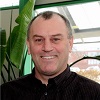
Life Sciences Webinars
Cryo-TEM Lamella Preparation from Biological Samples
Low-temperature electron microscopy (cryo-EM) has become an established technique for capturing and observing beam-sensitive samples in their close-to-natural state.
Cryo-sectioning is a standard method used for thinning and slicing such samples. However, the integrity of the specimens can be degraded easily by common artifacts such as knife marks, compression, or crevasses. Focused ion beam (FIB), on the other hand, is used extensively to reveal sub-surface information from bulk material, create samples for other analytical modalities, or prepare ultra-thin specimens for analysis in transmission electron microscopy (TEM), without knife-sectioning artifacts.
Moreover, combining the site-specific milling capabilities of FIB with scanning electron microscopy (SEM) opens a broad range of possibilities for preparing biological samples. FIB-SEM systems are widely used not only for routine preparation of ultra-thin TEM specimens but also for precision cross-sectioning and 3D volume imaging, which are possible in ambient temperatures as well as in cryogenic conditions.
The seminar aims to demonstrate the feasibility and discuss the potential of TESCAN cryo-FIB-SEM as a reliable tool for cryo-TEM sample preparation, with its exceptional range of additional capabilities—all within a single versatile workstation.
About Ondrej Sulak
Ondřej Šulák received his Master’s degree in Analytical chemistry at Masaryk University in the Czech Republic. Then, he moved to France where he continued his Ph.D. studies and Postdoctoral research at Joseph Fourier University in Grenoble where he was focused on the structure-functional characterization of carbohydrate-binding proteins, mainly by X-ray crystallography, Electron Microscopy, SAXS, and other techniques. His industrial career started in the biotechnological company where he was responsible for the biochemistry department. In 2016, Ondrej joined TESCAN as Global Applications Director. Since January 2019 he works as Product Marketing Director for the Life Sciences segment.
Presenter: Ondrej Sulak
Date: ON DEMAND

3D FIB/SEM Data Acquisition and Processing Solutions for Life Sciences
Current trends in electron microscopy include increased focus on the analysis of beam-sensitive biological materials such as tissue or cell cultures. Modern SEM column designs are able to acquire images at very low accelerating energies which are key for efficient visualization of these sensitive biological samples at scales approaching the nanometer range.
Combining scanning electron microscopy with the site-specific milling capability of the focused ion beam (FIB) opens a broader range of possibilities for studying biological samples. FIB-SEM systems are widely used not only for routine preparation of ultra-thin specimens for analysis in the transmission electron microscope (TEM) but also for precise cross-sectioning and 3D volume imaging in both ambient temperatures and cryogenic conditions. FIB milling is used extensively to reveal sub-surface information from bulk material or to create samples for other analytical modalities. Using FIB-SEM for 3D tomography is a powerful technique in structural biology for enabling visualization of diverse organelles and tiny structures which helps researchers answer questions about the principles of biological processes.
In the seminar, we will discuss the capabilities of FIB-SEM solutions for detailed structural analysis of biological samples, including recent trends for using plasma-based FIB-SEM solutions to revealing the highest details in large volume sample analyses.
About Martin Slama
Martin Sláma is a Product Manager for FIB/SEM in Material Science and Life Science with over 5 years of experience in conventional and advanced TEM preparation methods using TESCAN’s plasma FIB and Ga+ FIB-SEM solutions for Materials Science. Prior to joining TESCAN, Martin worked in the field of new material development and characterization at Brno Technological University, CEITEC, and Aston University.
Presenter: Martin Slama
Date: ON DEMAND

TESCAN SEM & FIB-SEM solutions optimized for your Life Science applications | TESCAN
TESCAN is excited to present you with our optimized ultra-high resolution scanning electron microscope (UHR-SEM) and focused ion beam (FIB-SEM) solutions for beam-sensitive biological materials. During this webinar, we will discuss how TESCAN’s UHR-SEM solutions are able to image sensitive biological samples at low voltage image with high resolution due to the unique design of our electron columns. Both TESCAN CLARA and MAGNA will be discussed along with unique configuration options such as Cryo SEM.
A broad range of applications and microanalysis is enabled when combining TESCAN’s UHR SEM’s with a gallium or plasma focused ion beam. We will discuss TESCAN FIB-SEM solutions for planar, on-grid, preparation of ultra-thin lamella for transmission electron microscope (TEM) analysis, and compare/contrast gallium and plasma FIB for 3D Tomography segmentation and visualization. Please, join me in this exciting webinar to learn more about key applications with many practical examples that can be achieved with TESCAN´s instruments.
About Ondrej Sulak
Ondřej Šulák received his Master degree from Analytical chemistry at Masaryk University in the Czech Republic. Then, he moved to France where he continued his Ph.D. studies and Postdoctoral research at Joseph Fourier University in Grenoble where he was focused on the structure-functional characterization of carbohydrate-binding proteins, mainly by X-ray crystallography, Electron Microscopy, SAXS, and other techniques. His industrial career he started in the biotechnological company where he was responsible for biochemistry department. In 2016, Ondrej joint TESCAN as Global Applications Director. Since January 2019 he works as Product Marketing Director for Life Sciences segment.
Presenter: Ondrej Sulak
Date: ON DEMAND

Advanced 3D characterization of your biological and beam sensitive samples | TESCAN
Structural analysis of biological samples helps researchers better understand complex relationships between the structure and function of organelles, cells, and tissues. Combining the scanning electron microscope (SEM) with a nano-machining capability of the focused ion beam (FIB) opens a wide range of possibilities. FIB-SEM systems are widely used for routine preparation of ultra-thin TEM specimens and for their capability of precise cross-sectioning and 3D volume imaging.
This webinar offers a practical overview of SEM imaging applications and then focuses on the advanced 3D characterization of biological and beam sensitive samples. We will introduce techniques such as Serial Block-Face Imaging (SBFI), and 3D FIB-SEM tomography using Ga-FIB for precise and highly detailed analysis, and plasma Xe-FIB for large volume analysis.
About Ondrej Sulak
Ondřej Šulák received his Master degree from Analytical chemistry at Masaryk University in the Czech Republic. Then, he moved to France where he continued his Ph.D. studies and Postdoctoral research at Joseph Fourier University in Grenoble where he was focused on the structure-functional characterization of carbohydrate-binding proteins, mainly by X-ray crystallography, Electron Microscopy, SAXS, and other techniques. His industrial career he started in the biotechnological company where he was responsible for biochemistry department. In 2016, Ondrej joint TESCAN as Global Applications Director. Since January 2019 he works as Product Marketing Director for Life Sciences segment.
Presenter: Ondrej Sulak
Date: ON DEMAND

SEM Large-volume Analysis in Life Sciences assisted by Serial Block-Face Imaging
We are excited to present you our TESCAN brand-new solution in our Life Sciences product family, Serial Block-Face Imaging (SBFI).
Serial Block-Face Imaging (also known as Serial Block-Face SEM) is a traditional technique for high-resolution structural analysis of the sample using an integrated microtome to the SEM chamber. The method uses a diamond knife of the microtome to cut a slice from the sample surface (20-100 nm thin) which is immediately imaged by SEM. This process is repeated to create an image stack allowing a reconstruction of the sample volume.
In-chamber microtome device, compact size, simple and fast installation/de-installation, SEM / FIB-SEM GM chamber compatibility, effective LE-BSE imaging, and/or TESCAN volume analysis software – these are the key features that give us the opportunity to extend the capabilities of standard SEM to the volume scale of structural analysis. Key technical features of this exciting solution together with multiple application examples will be presented at the seminar.
About Ondrej Sulak
Ondřej Šulák received his Master’s degree in Analytical chemistry at Masaryk University in the Czech Republic. Then, he moved to France where he continued his Ph.D. studies and Postdoctoral research at Joseph Fourier University in Grenoble where he was focused on the structure-functional characterization of carbohydrate-binding proteins, mainly by X-ray crystallography, Electron Microscopy, SAXS, and other techniques. His industrial career started in the biotechnological company where he was responsible for the biochemistry department. In 2016, Ondrej joined TESCAN as Global Applications Director. Since January 2019 he works as Product Marketing Director for the Life Sciences segment.
Presenter: Ondrej Sulak
Date: ON DEMAND

Earth Sciences
Introducing the new TESCAN TIMA for Mineral Processing
In November 2020, TESCAN announced the release of the new generation of TESCAN TIMA, a dedicated solution for automated mineralogical analysis in Earth Science studies as well as for industrial mineral processing. As a dedicated industrial mineral processing solution, TIMA is designed with the robustness required by the industry, while also minimizing the need for expert operators or even on-site presence thanks to its high level of automation and remote-control capability.
TIMA’s patented spectral summing algorithm not only increases throughput but also significantly enhances the detection of low abundance elements. TIMA automates mineral phase identification, measurement, and textural data interpretation and channels the results into predefined or highly customizable reports. Particle and grains filtering and categorization are available for advanced users, while data management workflows remain simple. Built-in quality control features produce reliable and robust data which can be processed offline to maximize the tool time for the automated runs.
In this webinar, we will focus on TIMA’s features and workflows listed and their role in high throughput industrial mineral processing.
About Marek Dosbaba
Marek Dosbaba is a Product Manager for automated mineralogy at TESCAN ORSAY HOLDING in Brno, Czech Republic. Marek is with TESCAN since 2013. He has a background in mineralogy and the application of microanalytical methods on geological materials (electron microprobe, Raman spectroscopy, CL). He joined the application group first and switched to the product group at beginning of 2019.
Presenter: Marek Dosbaba
Date: ON DEMAND
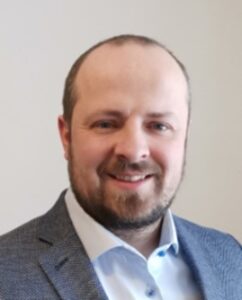
Introducing the new TESCAN TIMA for Geosciences
In November 2020, TESCAN announced the release of the new generation of TESCAN TIMA, a dedicated solution for automated mineralogical analysis in Earth Science studies as well as for industrial mineral processing. TIMA contributes to a wide array of applications ranging from petrography, metallurgy, liberation analysis, and provenance studies, even outside of geoscience.
TIMA is a user-friendly solution for executing petrographic workflows such as mineral identification and quantification, as well as localization of petrogenetically significant phases or their pairs based on their textural relationships, morphology, or association. TIMA can be the first step in complex analytical workflows followed by EPMA or LA ICPMS studies. TIMA is can be configured with an integrated Raman spectrometer, allowing direct identification of polymorphic modifications without the need to transfer the samples to other instruments. In addition to these features, TIMA also can provide a quantitative composition of both the individual mineral grains in relation to their morphology, as well as bulk composition of the entire sample.
In this webinar, we will focus on applications in geosciences and show how TIMA’s features and workflows support accurate, automated mineralogical analysis.
About Marek Dosbaba
Marek Dosbaba is a Product Manager for automated mineralogy at TESCAN ORSAY HOLDING in Brno, Czech Republic. Marek is with TESCAN since 2013. He has a background in mineralogy and the application of microanalytical methods on geological materials (electron microprobe, Raman spectroscopy, CL). He joined the application group first and switched to the product group at the beginning of 2019.
Presenter: Marek Dosbaba
Date: ON DEMAND

The celebration of Paul Gottlieb’s career and contributions in Automated Mineralogy | TESCAN
Presented by Dirk van der Wal, Product Marketing Director Materials and Geosciences for TESCAN
On January 1 of this year, Paul Gottlieb retired following 40 years of dedication to the development of Automated Mineralogy technology, systems, and applications, in collaboration with many of you, at institutions and companies across the globe. Please join us for a special 30-minute online event on March 3, in which we will celebrate Paul’s many contributions to Automated Mineralogy technology, hear stories from the early days in this field, and give you a chance to wish Paul and his wife Kay all the best in the next chapter of their lives. We look forward to having you with us as we give Paul the recognition that is so well deserved.
AUTOMATED MINERALOGY is an advanced, highly automated SEM/EDS microanalysis application‑possibly the earliest form of correlative microscopy‑and a prime example of how microanalysis data yields information about the textural relationships between minerals of interest, such as mineral association or liberation.
About Dirk van der Wal
Product Marketing Director Materials and Geosciences for TESCAN www.linkedin.com/in/dirkvanderwal
Presenter: Dirk van der Wal
Date: ON DEMAND

Semiconductors Webinars
Prepare Top-down, Inverted and Planar TEM lamella from Logic and Memory Devices
Presented by Lukas Hladik, Product Manager for FIB-SEM systems in the Semiconductor market segment
The global integrated circuit (IC) industry is facing not only continuous growth in demand for electronic devices but also improvements to device performance and energy consumption—all while decreasing device footprint. In order to achieve this, TEM lamella preparation has become an inevitable part of the failure analysis process.
The 3D structure of today’s devices requires the localization of defects in different projections. The shrinking device size dictates the need to use inverted TEM lamella geometry to achieve sub-10 nm lamella thickness. With defect size now at the nm-scale, there is an additional need for plan-view TEM lamella geometry for STEM observation. Thus, TEM lamella lift-out procedures might require multiple manipulation steps or even breaking the vacuum to reach inverted or plan-view lamella geometries. TESCAN SOLARIS addresses these challenges with a patented setup that enables lamella transfer from a bulk sample onto a TEM grid with a single, simple manipulation step, and no need to break the vacuum or unload the sample. Most importantly, this approach does not require any additional hardware to be installed.
This webinar will provide you with insight into how TESCAN SOLARIS and its ecosystem can be utilized for semi-automated, high-quality, low beam damage sample preparation in the semiconductor FA lab environment.
About Lukas Hladik
Lukas Hladik is a Product Manager for FIB-SEM, characterization, and delayering/probing solutions for FA semiconductor R&D labs. He joined TESCAN ORSAY HOLDING in 2012 as an application specialist for Plasma FIB-SEM platforms. All his work in TOH has been connected extensively with the worldwide semiconductor industry. Lukas has a Master’s degree in Physical Engineering and Nanotechnology from Brno University of Technology, Brno, Czech Republic.
Presenter: Lukas Hladik
Date: ON DEMAND

Faster mm-scale Semiconductor Failure Analysis by Combining Plasma FIB Milling and Laser Ablation
Improvements in performance and decreases in power consumption have long been the basic requirements in the design of electronic devices. These properties have been achieved through miniaturization of device building blocks (transistors, memory cells, etc.), reduction of the signal path (advanced integration of multiple components in one package), and optimization of other components, including displays, RF, MEMS, or batteries.
Developing new technology products is very challenging. Fast failure analysis (FA) significantly helps in determining defect root-cause and providing feedback to maintain feasible time-to-market and device reliability. FA in packaging, advanced packaging, displays, RF, MEMS, and batteries usually involves searching for a defect buried a few hundred micrometers or even millimeters under the surface. Due to the sensitivity of the structures, site-specific analysis of the defect is usually done in cross section and large amounts of material must be sputtered to get to the region of interest. Industry-proven plasma FIB technology has served these purposes for nearly 10 years. Recently, however, significant increases to both the complexity of the devices and the depth of buried defects, together with pressure on time-to-result have challenged even plasma FIB capabilities. Adding the thousands-times faster laser ablation technique to the plasma FIB sample analysis workflow speeds the time to premium results while also opening new synergies among other instrumentation in the FA laboratory.
This webinar will provide you with an introduction to the TESCAN Large Volume Workflow. The flexibility of the workflow will be demonstrated using demanding samples of different sizes, including complex devices and non-conductive hard materials. We will show how to achieve fast, artifact-free sample preparation results that are compatible with UHR SEM imaging for revealing the finest details.
About Jozef Vincenc Obona
Jozef Vincenc Obona is a Product Marketing Director for the semiconductor market segment at TESCAN ORSAY HOLDING HQ in Brno, Czech Republic. He obtained a Ph.D. in cryo-electronics at the Slovak Academy of Sciences (Slovakia). He has been active in semiconductor failure analysis (Front-End of the Line, Back-End of the Line and packaging applications) and extensively communicating with semiconductor industry leaders for more than 6 years. He has gained over 13 years of experience in FIB-SEMs and 5 years in ultra-short laser pulse processing in applied research at Instituto de Nanociencia de Aragon (Zaragoza, Spain) as well as University of Groningen and University of Twente (Groningen, Enschede, The Netherlands). He is the author of 3 patents and 52 publications.
Presenter: Jozef Vincenc Obona
Date: ON DEMAND
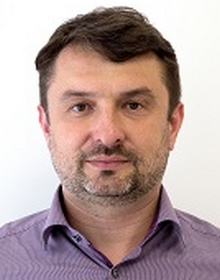
TESCAN SOLARIS X for Semiconductors
The semiconductor industry is engaged in a relentless race where the aim is high integration, high density, and miniaturization of microelectronic devices. This has resulted in the development of new technologies such as 3D ICs that make it possible to integrate extensive functionality into ever smaller, faster, and lower power consumption devices. TESCAN SOLARIS X pairs the high-throughput i-FIB+™ Xe plasma FIB column with the Triglav™ UHR electron column to extend the capabilities of FIB physical failure analysis to include large-area and deep cross-sectioning on advanced packaging, microelectromechanical devices, and optoelectronics. Come and join our webinar on TESCAN SOLARIS X for Semiconductors. Besides deep sectioning, the webinar will examine the wider potential of SOLARIS X for a Ga-free TEM sample preparation and homogenous FIB delayering of sub-14 nm technology nodes.
About Lukas Hladik
Lukas Hladik is a Product Manager for FIB-SEM, characterization, and delayering/probing solutions for FA semiconductor R&D labs. He joined TESCAN ORSAY HOLDING in 2012 as an application specialist for Plasma FIB-SEM platforms. All his work in TOH has been connected extensively with the worldwide semiconductor industry. Lukas has a Master’s degree in Physical Engineering and Nanotechnology from Brno University of Technology, Brno, Czech Republic.
Presenter: Lukas Hladik
Date: ON DEMAND

TESCAN Micro-CT Webinars
SPECTRAL CT - a smart micro-CT application delivering non-destructive chemical information from any point inside a sample.
Spectral CT provides chemical information at any point within a sample, complementing TESCAN’s state-of-the-art structural imaging capabilities. With Spectral CT materials scientists can now see the most subtle changes in material composition and purity, and low contrast materials, such as polymers, can be differentiated from each other, which is not possible using micro-CT alone. Discover a unique opportunity to gain insight into the chemical composition of your typical micro-CT sample!
Register to the webinar introducing SPECTRAL CT now!
About Wesley De Boever
Product Marketing Manager
Presenter: Wesley De Boever
Date: ON DEMAND

TESCAN SPECTRAL CT - A New Dimension in Micro-CT
Micro-CT is a well-established method for the non-destructive, structural characterization of materials. Evolution in hardware and software over the years has made it the go-to solution to study the behavior of these materials—and TESCAN is at the forefront of dynamic micro-CT imaging, pushing temporal resolutions down to just seconds. However, traditional micro-CT has challenges in providing true information about a sample’s composition, as contrast is generated by a combination of atomic number and material density. TESCAN has solved this problem.
TESCAN proudly presents ‘SPECTRAL CT’, a revolution in computed tomography that makes use of new advances in detector technology. Where traditional micro-CT measures the loss of intensity of an x-ray beam as it passes through a sample, SPECTRAL CT captures the entire x-ray spectrum that leaves the x-ray source, and after it has interacted with the sample. This allows for a much more precise measurement of x-ray to material interactions, truly capturing the spectral signature of any material.
Using SPECTRAL CT, we can measure absorption edges for absolute identification of elements. We can provide contrast where traditional CT cannot, by carefully analyzing the shape and peaks in an x-ray spectrum—and we can even enhance the well-known method of ‘dual-energy CT’ by looking at all energies in a single scan. SPECTRAL CT is the first technology to enhance micro-CT with true chemical analytical capabilities and provides a direct match with high-quality, non-destructive structural characterization of a sample’s internal features.
Register to the webinar introducing SPECTRAL CT now!
About Wesley De Boever
Product Marketing Manager – introduces the TESCAN UniTOM HR and show how it can change the way you think about high-resolution micro-CT imaging.
Presenter: Wesley De Boever
Date: ON DEMAND

TESCAN SPECTRAL CT - A New Dimension in Micro-CT
Micro-CT is a well-established method for the non-destructive, structural characterization of materials. Evolution in hardware and software over the years has made it the go-to solution to study the behavior of these materials—and TESCAN is at the forefront of dynamic micro-CT imaging, pushing temporal resolutions down to just seconds. However, traditional micro-CT has challenges in providing true information about a sample’s composition, as contrast is generated by a combination of atomic number and material density. TESCAN has solved this problem.
TESCAN proudly presents ‘SPECTRAL CT’, a revolution in computed tomography that makes use of new advances in detector technology. Where traditional micro-CT measures the loss of intensity of an x-ray beam as it passes through a sample, SPECTRAL CT captures the entire x-ray spectrum that leaves the x-ray source, and after it has interacted with the sample. This allows for a much more precise measurement of x-ray to material interactions, truly capturing the spectral signature of any material.
Using SPECTRAL CT, we can measure absorption edges for absolute identification of elements. We can provide contrast where traditional CT cannot, by carefully analyzing the shape and peaks in an x-ray spectrum—and we can even enhance the well-known method of ‘dual-energy CT’ by looking at all energies in a single scan. SPECTRAL CT is the first technology to enhance micro-CT with true chemical analytical capabilities and provides a direct match with high-quality, non-destructive structural characterization of a sample’s internal features.
Register to the webinar introducing SPECTRAL CT now!
About Wesley De Boever
Product Marketing Manager – introduces the TESCAN UniTOM HR and show how it can change the way you think about high-resolution micro-CT imaging.
Presenter: Wesley De Boever
Date: ON DEMAND

TESCAN Micro-CT - Multi-Scale micro-CT imaging using the TESCAN UniTOM XL
Please join Dr. Wesley De Boever (micro-CT product marketing manager) for a webinar on “Multi-Scale Micro-CT imaging using the TESCAN UniTOM XL”.
Micro-CT is a widely used technology to scan samples ranging from a few millimeters to tens of centimeters, but to take full use of that sample range is not trivial and often challenging. In this webinar, we will address how a multi-scale workflow ranging from very large samples – up to 1 meter tall and 60 cm wide – to very small can be performed by combining non-destructive and destructive subsampling techniques.
The webinar will focus on TESCAN’s Volume-Of-Interest scanning workflow, and how it is applied in the TESCAN UniTOM XL micro-CT system. The TESCAN UniTOM XL delivers ultimate versatility by combining an extremely long source-to-detector distance of up to 2 meters, with complete motorization of all axes of the system and a high power x-ray source. All of this will be demonstrated by using application examples in Materials Sciences, Earth Sciences, Life Sciences, and more.
About Wesley De Boever
Product Marketing Manager – introduces the TESCAN UniTOM HR and show how it can change the way you think about high-resolution micro-CT imaging.
Presenter: Wesley De Boever
Date: ON DEMAND

Micro-CT: Performance Simply Delivered
TESCAN’s micro-CT systems are designed with fast imaging speeds in mind. Acquisition times are often a matter of minutes, allowing high sample throughput to enable researchers to increase statistics by scanning many samples. Moreover, high signal to noise ratio, no acquisition artefacts, and excellent contrast yields superior image quality, which allows for easier segmentation, more precise measurements and quantification.
About Wesley De Boever
Product Marketing Manager – introduces the TESCAN UniTOM HR and show how it can change the way you think about high-resolution micro-CT imaging.
Presenter: Wesley De Boever
Date: ON DEMAND

Spatial resolution meets temporal resolution
– TESCAN UniTOM HR
Discover the latest and greatest addition to the TESCAN Dynamic Micro-CT portfolio: the TESCAN UniTOM HR.
As pioneers in dynamic micro-CT, TESCAN has been pushing the limits of temporal resolution for lab-based micro-CT down to seconds, enabling true dynamic imaging experiments to provide unique insights to engineers and scientists. Building on that expertise, the TESCAN UniTOM HR is the first dynamic micro-CT system to offer a sub-micron spatial resolution, without compromising on temporal resolution and in-situ capabilities.
About Wesley De Boever
Product Marketing Manager – introduces the TESCAN UniTOM HR and show how it can change the way you think about high-resolution micro-CT imaging.
Presenter: Wesley De Boever
Date: ON DEMAND

Micro-CT and Additive Manufacturing: Moving from 3D to 4D
The evolution of additive manufacturing (AM) over the last decade has been impressive and looks to be revolutionary as a disruptive technique in the overall manufacturing arena. However, there are still a number of obstacles to overcome concerning the quality of the final part. Micro Computed tomography (micro-CT) is a non-destructive technique used to create highly detailed 3D volumes of intact samples and is widely used throughout an AM part’s lifecycle, including process development, process monitoring, and final part quality. TESCAN micro-CT products meet this challenge head-on; providing maximum flexibility and versatility, as well as opening up the possibility to perform 4D studies on samples.
In this seminar we will provide the basics of micro-CT, examples of imaging 3D printed samples, and discuss the future of micro-CT, and dynamic CT – where samples are continuously scanned at high rates while undergoing change, either naturally or induced. If you’d like to learn more about this exciting topic, please join us to see the possibilities that micro-CT brings to the additive manufacturing space!
About Jan Dewanckele
Jan Dewanckele is a Senior Application Scientist for TESCAN XRE at the micro-CT Technology Center in Ghent, Belgium. He has been active in micro-CT technology for more than 10 years, covering a broad array of applications with a clear focus on dynamic CT. He obtained a Ph.D. in geosciences at Ghent University (Belgium).
Presenter: Jan Dewanckele
Date: ON DEMAND
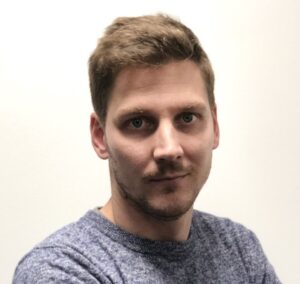
X-ray micro-CT in geoscience: multiscale and dynamic imaging
This webinar will provide a general introduction to the relevant technology and applications in oil and gas, sedimentology and mineralogy. The possibilities of this non-destructive imaging technique will be illustrated with multiple examples, with a special focus on multiscale imaging (imaging from core scale down to pore-scale) and dynamic imaging (visualizing fluid flow at pore scale).
About Marijn Boone, PhD
Product Manager, Micro-CT Marijn Boone is a product manager for micro-CT at TESCAN. His main research focus is on enabling and facilitating in situ imaging and fast dynamic imaging using lab-based micro-CT systems, with a special interest in visualizing pore scale processes in geological materials. He holds a PhD in Geology from Ghent University.
Presenter: Marijn Boone, PhD
Date: ON DEMAND

Introduction to TESCAN Dynamic micro-CT
Time-resolved 3D imaging with X-rays has rapidly emerged as an essential technique to understand materials evolution; facilitating in situ investigations ranging from mechanical deformation to fluid flow in porous materials. In this webinar we explore the challenges and innovations that have led to this capability, highlighting a number of examples across materials science, life science, and geoscience applications.
About Luke Hunter
Luke Hunter is the regional product manager for North and South America for TESCAN’s Micro-CT product lines with over a decade of experience in micro-computed tomography. He received his master’s degree from the University of California, Berkeley (Berkeley, CA USA) in Mechanical Engineering and his bachelor’s degree in Mechanical Engineering from Washington State University (Pullman, WA USA).
Presenter: Luke Hunter
Date: ON DEMAND

Introduction to TESCAN micro-CT
Interested in learning more about the amazing 3D non-destructive technique of micro-computed tomography (micro-CT)? In this webinar, we’ll cover a bit of the history of computed tomography, the fundamentals of how it works (including limitations), and highlight a number of application examples.
About Luke Hunter
Luke Hunter is the regional product manager for North and South America for TESCAN’s Micro-CT product lines with over a decade of experience in micro-computed tomography. He received his master’s degree from the University of California, Berkeley (Berkeley, CA USA) in Mechanical Engineering and his bachelor’s degree in Mechanical Engineering from Washington State University (Pullman, WA USA).
Presenter: Luke Hunter
Date: ON DEMAND

TESCAN SPECTRAL CT - A New Dimension in Micro-CT
Micro-CT is a well-established method for the non-destructive, structural characterization of materials. Evolution in hardware and software over the years has made it the go-to solution to study the behavior of these materials—and TESCAN is at the forefront of dynamic micro-CT imaging, pushing temporal resolutions down to just seconds. However, traditional micro-CT has challenges in providing true information about a sample’s composition, as contrast is generated by a combination of atomic number and material density. TESCAN has solved this problem.
TESCAN proudly presents ‘SPECTRAL CT’, a revolution in computed tomography that makes use of new advances in detector technology. Where traditional micro-CT measures the loss of intensity of an x-ray beam as it passes through a sample, SPECTRAL CT captures the entire x-ray spectrum that leaves the x-ray source, and after it has interacted with the sample. This allows for a much more precise measurement of x-ray to material interactions, truly capturing the spectral signature of any material.
Using SPECTRAL CT, we can measure absorption edges for absolute identification of elements. We can provide contrast where traditional CT cannot, by carefully analyzing the shape and peaks in an x-ray spectrum—and we can even enhance the well-known method of ‘dual-energy CT’ by looking at all energies in a single scan. SPECTRAL CT is the first technology to enhance micro-CT with true chemical analytical capabilities and provides a direct match with high-quality, non-destructive structural characterization of a sample’s internal features.
Register to the webinar introducing SPECTRAL CT now!
About Wesley De Boever
Product Marketing Manager – introduces the TESCAN UniTOM HR and show how it can change the way you think about high-resolution micro-CT imaging.
Presenter: Wesley De Boever
Date: ON DEMAND


